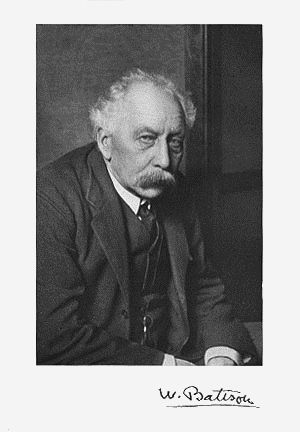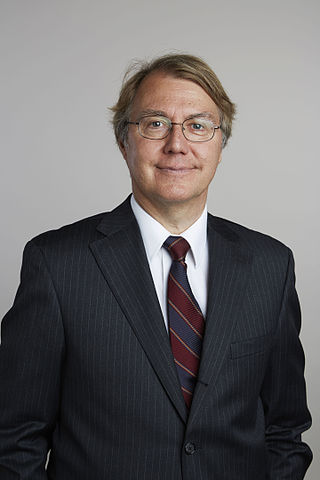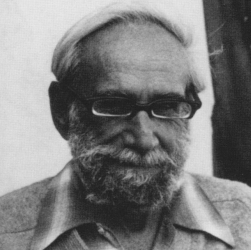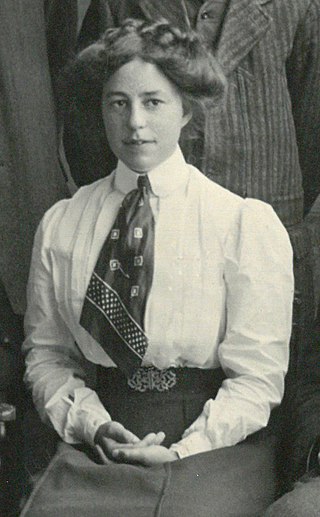Related Research Articles

The American Association for the Advancement of Science (AAAS) is an American international non-profit organization with the stated goals of promoting cooperation among scientists, defending scientific freedom, encouraging scientific responsibility, and supporting scientific education and science outreach for the betterment of all humanity. AAAS was the first permanent organization to promote science and engineering nationally and to represent the interests of American researchers from across all scientific fields. It is the world's largest general scientific society, with over 120,000 members, and is the publisher of the well-known scientific journal Science.

William Bateson was an English biologist who was the first person to use the term genetics to describe the study of heredity, and the chief populariser of the ideas of Gregor Mendel following their rediscovery in 1900 by Hugo de Vries and Carl Correns. His 1894 book Materials for the Study of Variation was one of the earliest formulations of the new approach to genetics.

Nevil Vincent Sidgwick FRS was an English theoretical chemist who made significant contributions to the theory of valency and chemical bonding.
In chemistry, the study of sonochemistry is concerned with understanding the effect of ultrasound in forming acoustic cavitation in liquids, resulting in the initiation or enhancement of the chemical activity in the solution. Therefore, the chemical effects of ultrasound do not come from a direct interaction of the ultrasonic sound wave with the molecules in the solution.
The Breakthrough of the Year is an annual award for the most significant development in scientific research made by the AAAS journal Science, an academic journal covering all branches of science. Originating in 1989 as the Molecule of the Year, and inspired by Time's Person of the Year, it was renamed the Breakthrough of the Year in 1996.

John James Stevenson was an American geologist, born in New York City. He graduated from New York University in 1863, became professor of chemistry at West Virginia University for two years (1869–71), then served as professor of geology at New York University until 1909. During 1873–74 and from 1878 to 1880 he was geologist for the United States Geological Survey. He also served on the Pennsylvania Geological Survey from 1875 to 1878 and from 1881 to 1882. He was president of the Geological Society of America in 1898.

Andrew Herbert Knoll is the Fisher Research Professor of Natural History and a Research Professor of Earth and Planetary Sciences at Harvard University. Born in West Reading, Pennsylvania, in 1951, Andrew Knoll graduated from Lehigh University with a Bachelor of Arts in 1973 and received his Ph.D. from Harvard University in 1977 for a dissertation titled "Studies in Archean and Early Proterozoic Paleontology." Knoll taught at Oberlin College for five years before returning to Harvard as a professor in 1982. At Harvard, he serves in the departments of Organismic and Evolutionary Biology and Earth and Planetary Sciences.

Fossil Cycad National Monument was a national monument in the U.S. state of South Dakota beginning in 1922. The site contained hundreds of fossils of the cycad-like bennettitalean plant Cycadeoidea, one of the world's greatest concentrations. Because vandals stole or destroyed all of the visible fossils, it was withdrawn as a national monument in 1957. It is located in northwestern Fall River County, on U.S. Route 18, northeast of the city of Edgemont.
The Mysterious Universe is a popular science book by the British astrophysicist Sir James Jeans, first published in 1930 by the Cambridge University Press. In the United States, it was published by Macmillan.
BIOSIS Previews is an English-language, bibliographic database service, with abstracts and citation indexing. It is part of Clarivate Analytics Web of Science suite. BIOSIS Previews indexes data from 1926 to the present.

Martin David Burkenroad was an American marine biologist. He specialized in decapod crustaceans and fisheries science.

Jared Diamond is an American scientist and author. Trained in physiology, and having published on ecology, anthropology, and linguistics, Diamond's work is known for drawing from a variety of fields. He is currently professor of geography at the University of California, Los Angeles (UCLA). Among his awards are a Pulitzer Prize and an International Cosmos Prize. Diamond splits his time between teaching at UCLA, researching birds of Southwester Pacific islands, writing books about human societies, and promoting sustainable ecological practices. He formerly had a secondary career path in physiology and biophysics.

Charles Reid Barnes (1858–1910) was an American botanist specializing in bryophytes. He was co-editor of the Botanical Gazette for over 25 years.

Kathleen E. Carpenter (1891–1970) was a British freshwater ecologist. She is best known for her early studies of the effects of metal pollution on Welsh rivers and their biota, as well as her book Life in Inland Waters, the first textbook in English wholly devoted to freshwater ecology.

Nora May Mohler was an American physicist, elected a Fellow of the American Physical Society in 1941.
Marvin Goldman is an American radiation biologist, known for "his highly significant contributions to the understanding of the effects of bone-seeking radionuclides—in carcinogenic characteristics of long-term strontium-90 exposures."
Frederick Wiley Stevens was an American physicist, known for his research on gaseous explosive reactions. He was elected in 1931 a fellow of the American Physical Society.
Frank Caleb Gates was an American botanist and plant ecologist. He was the president of the Ecological Society of America (ESA) in 1952.
James Howard Brown was an American professor of bacteriology. He was the president of the American Society for Microbiology in 1931.
Frank Lincoln Stevens was an American mycologist and phytopathologist. He gained an international reputation as one of the preeminent mycologists.
References
- 1 2 "Biological Abstracts on the Web of Science". Web of Science . Archived from the original on 2020-09-22. Retrieved 22 September 2020.
- ↑ "Biological Abstracts". Ovid Technologies. Archived from the original on 2011-09-29. Retrieved 2011-07-26.
- ↑ "Wolters Kluwer | Ovid - Home". Archived from the original on 2013-12-19. Retrieved 2013-02-28.
- ↑ Sheehy, Eugene Paul (1986). Guide to Reference Books (10th ed.). American Library Association. ISBN 0838903908.
- ↑ Burke, Colin B. (2014). Information and Intrigue: From Index Cards to Dewey Decimals to Alger Hiss. Cambridge, MA: MIT Press. pp. 166–168, 235–237. ISBN 978-0-262-02702-1.
- ↑ Curtis, W. C. (May 15, 1931). "The Washington Conference of March 7, 1931". Science . American Association for the Advancement of Science. 73 (189): 509–512. Bibcode:1931Sci....73..509C. doi:10.1126/science.73.1898.509. JSTOR 1655530. PMID 17778395.
- ↑ Schramm, J. R. (May 15, 1931). "Biological Abstracts". Science . American Association for the Advancement of Science. 73 (1898): 512–516. Bibcode:1931Sci....73..512S. doi:10.1126/science.73.1898.512. JSTOR 1655531. PMID 17778396.
- ↑ Mcclung, C. E. (May 15, 1931). "The Union and Biological Abstracts". Science . American Association for the Advancement of Science. 73 (1898): 517–518. Bibcode:1931Sci....73..517M. doi:10.1126/science.73.1898.517. JSTOR 1655532. PMID 17778397.